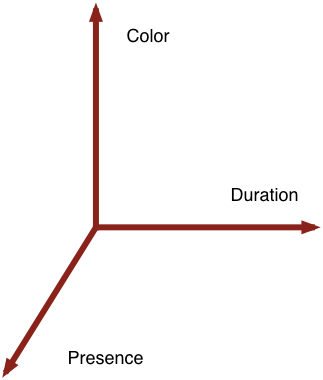Imaginary music (PRELIMINARY ENGLISH VERSION)
[home] <<summary <preceding
next>
[Français
![]() ]
]
The space of the music concretely rests on that of the sounds, as the space of the sculpture rests on that of the mineral.
As well as sculptor does not speak about his universe in terms of physics of materials, our understanding of the sound space cannot be reduced to an approach of acoustician; our interest aims rather at the perceptions and at the feelings inferred by the music.
Nevertheless we need to lean on stable concepts. The physics of the vibrations can bring us a well established and practical base. It would be pity to go without it.
Thus, at our starting point, the musical space is indeed the same that the acoustic sound space.
To describe the properties of the waves of vibration of the air, the acoustics uses the following parameters: the frequency and the amplitude of the vibrations in function of the progress of time.
These rational and objective concepts are not however the most relevant to base our approach. We shall derive from them three others, that are more adapted to the aesthetic point of view.
The time of the music which takes place is not the objective time of the chronometer. The feeling of duration that the listening subject feels seems more important.
The more or less strong amplitude of a sound arouses a more or less pregnant feeling of presence. The feeling of presence is more important for the listener than the exact measure of the amplitude. It also depends on some other parameters.
The frequencies characterizing the tones of the instruments which produce sounds, and their variety, constitute what we often call the " sound palette ". The notion of color, which we use in the visual world, would be also relevant for the domain of the music.
So, to qualify subjectively a sound which appears in our field of listening, we can speak about its duration, its presence and its color. These three aspects of perception of sounds so get a three-dimensioned frame to track down things in the sound space.

Figure 1 : The three-dimensioned frame to track down things in the sound space
Imaginary music ISBN 978-2-9530118-0-7 copyright Charles-Edouard Platel
[home] <<summary <preceding top^ next>